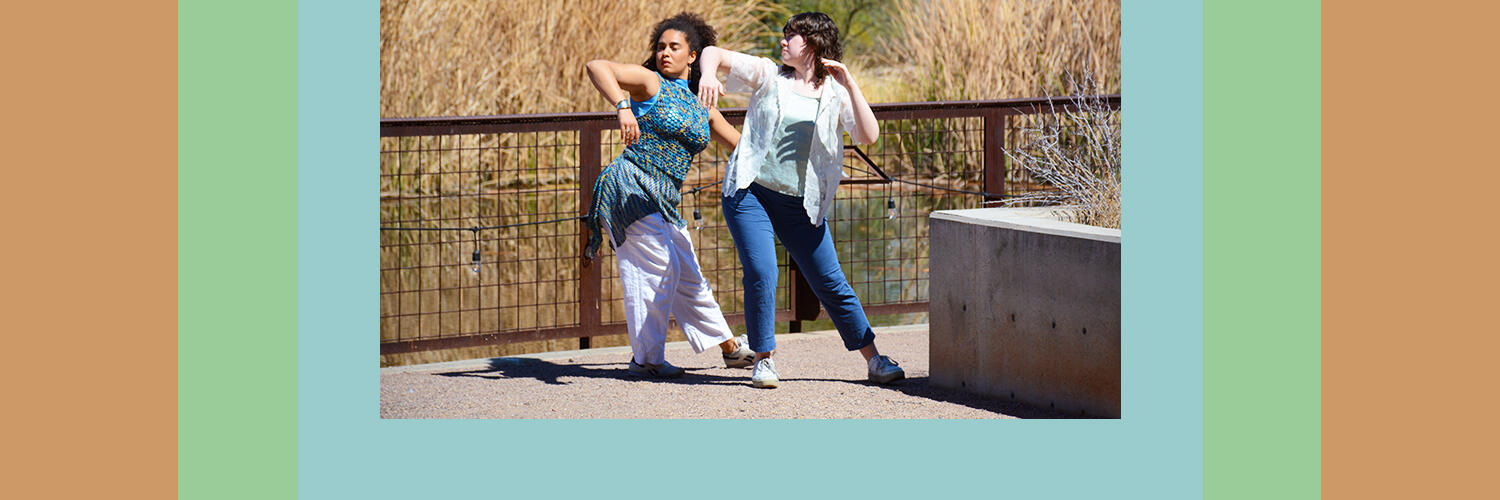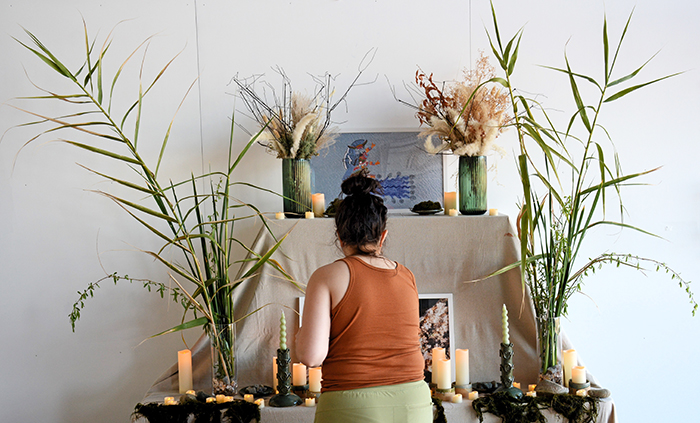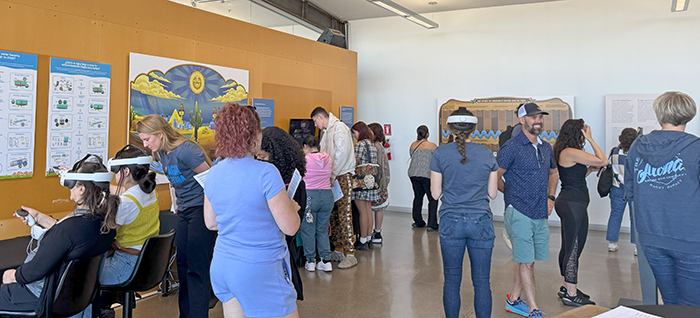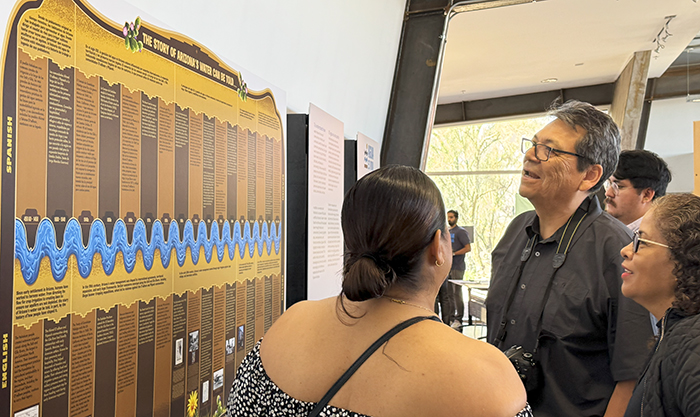
Activating South Phoenix communities’ connections to water
The project Agua es Vida: Interactive Exhibit is currently being shown at the Nina Mason Pulliam Rio Salado Audubon Center. The exhibit is made up of numerous culturally-relevant works by and for the South Phoenix Latino community, as well as diverse learning experiences that were designed to communicate valuable water knowledge and science in broadly accessible ways.
Agua es Vida: Interactive Exhibit is supported by Impact Water - Arizona, a pillar of ASU’s Arizona Water Innovation Initiative, and NSF Water SIMmersive. The project is led by Gilberto Lopez and Franscisco Lara-Valencia of the School of Transborder Studies and JoAnna Reyes of the Herberger Institute for Design and the Arts working alongside many collaborators and partners.
Overall, the Agua es Vida exhibit encourages South Phoenix Latino communities to investigate their understanding of water and how it directly impacts their community members. The exhibition purposefully addresses water knowledge gaps that were identified through a survey of the South Phoenix Latino community by providing scientific information that is digestible, non-intimidating and intergenerationally applicable.
An exhibit curated by and for the South Phoenix Latino community
The official opening of the Agua es Vida exhibition took place on March 22, 2025, where special events were designed to highlight and empower South Phoenix Latino people and culture with traditional dance and music performances and a puppet show to demonstrate digestible and creative water storytelling.
In addition, CALA Alliance, a Latinx cultural arts organization and collaborative partner to the Agua es Vida exhibit, created a specialized ofrenda, or altar, to represent water as an innate being and entity present within the exhibition room itself. Multiple visitors expressed that the ofrenda beautifully embodied a physical presence of water.

The exhibition focuses on empowering the South Phoenix Latino community to learn more about their water through historic timelines, interactive activities, resourcing tables and striking installation murals and artistic works that show valuable water information. Topics include water taste, residential water origins and other water-related subjects.
The Latino community has been historically marginalized in the Phoenix metropolitan area and redlining often served to distance people from their environment. However, water is innately interconnected in all people’s lives, and particularly in Latino communities where there is a rich cultural connection to water.
In addition, many different occupations that are common in the South Phoenix Latino community, including agriculture, construction and landscaping, directly involve water concerns and therefore also offer connection points to their water systems.
Prioritizing South Phoenix Latino families and their lived experiences in spaces such as museums, where they have often been excluded, helps address the disconnects in these institutional spaces, as well as helps create a more welcoming environment to a diverse array of learners.
Art can make science more accessible
Art universally engages audiences to interact with subject matter, to ask questions and spark curiosity. From diagram drawings to VR experiences, art is a necessary component of conveying science to communicate various concepts.
“Art is deeply embedded within science,” says Lopez. “We often think they are separate, but they are not. Scientific jargon can often be exclusive and intimidating, which becomes a disservice to the Latino community.”
Lara-Valencia adds that “art is a communicative instrument” that can assist in the communication, especially regarding subjects that may be perceived as technically more complex.

Through auditory, visual and even hands-on methods, the Agua es Vida exhibition accommodates a wide range of learning methods. In fact, “art can make science more accessible” to a diverse set of learners, says Reyes.
Not only can people use learning methods that have typically served them well, but visitors can also explore and find other methods that might bring different kinds of knowledge, understanding and insight. Moreover, the centering of artistic components and interactive elements within the exhibition truly highlights the importance of diverse learning methods.
Welcoming visitors
The ongoing exhibition includes multiple commissioned works from Latino artists, where real water data is outlined and visualized for visitor comprehension. Additionally, for a Mother’s Day event on May 10, special demonstrations such as water dances, puppet shows and workshop opportunities will be available.
The exhibition site provides visitors with beautiful wetland and riparian habitats to enjoy and take learnings from as well. The exhibition is an intimate space with a natural blend of both informative and artistic demonstrations, and numerous interactive educational components to solidify learnings from the exhibition itself.

Through interactive hands-on elements such as puzzles, online knowledge quizzes and innovative engagement methods such as Virtual Reality tours of water purification processes, this project encourages South Phoenix Latino communities to engage with their water systems and advocate for their communities’ perspectives and needs.
“The exhibition’s emphasis on accessibility through bilingual artworks, and signage throughout, makes the space feel safe and accessible,” says Dayanara Avilez, program coordinator with Impact Water - Arizona.
The exhibition transcends and dissolves boundaries of art and science, as Lopez says, “humans are storytellers and storytelling makes us human.” Sharing unique cultural experiences and practices are some of many powerful ways stories are told.
Moreover, though the cultural components of the exhibition are specifically tailored for South Phoenix Latino community members, non-Latino populations can gain much insight and context into the lived experiences of their neighbors.
Activation and collaboration
With the goal of dissolving boundaries between art and science, the Agua es Vida exhibition looks to “activate Latino community members, as they have the capacity and urgency” to further address their current water circumstances, says Lara-Valencia.
Activation of communities through empowerment can lead to increased communal capacity and further increase community resilience to adversities and obstacles. Through following calls to action and investing in communal water knowledge, South Phoenix Latino community members continue to increase their resiliency and capacity to address water related issues.
The accessible and digestible formats of knowledge designed for this exhibition strategically challenge visitors to engage with their current water knowledge and deepen their understanding of Arizona water systems. The exhibition is creating solutions for communities, by communities.
Come experience this family-friendly and artistic demonstration of accessible water knowledge and science at the Agua es Vida Mexican Mother’s Day event!